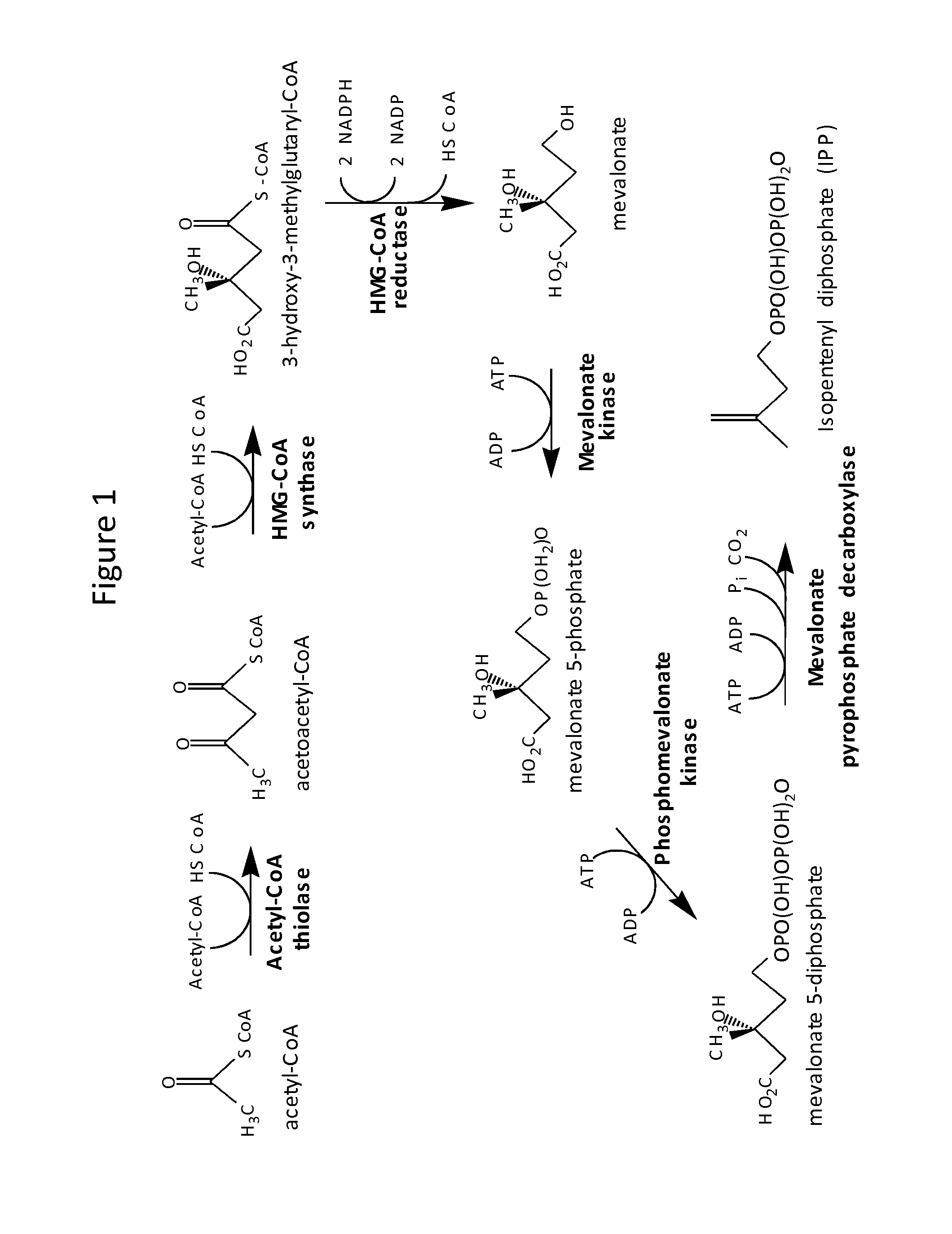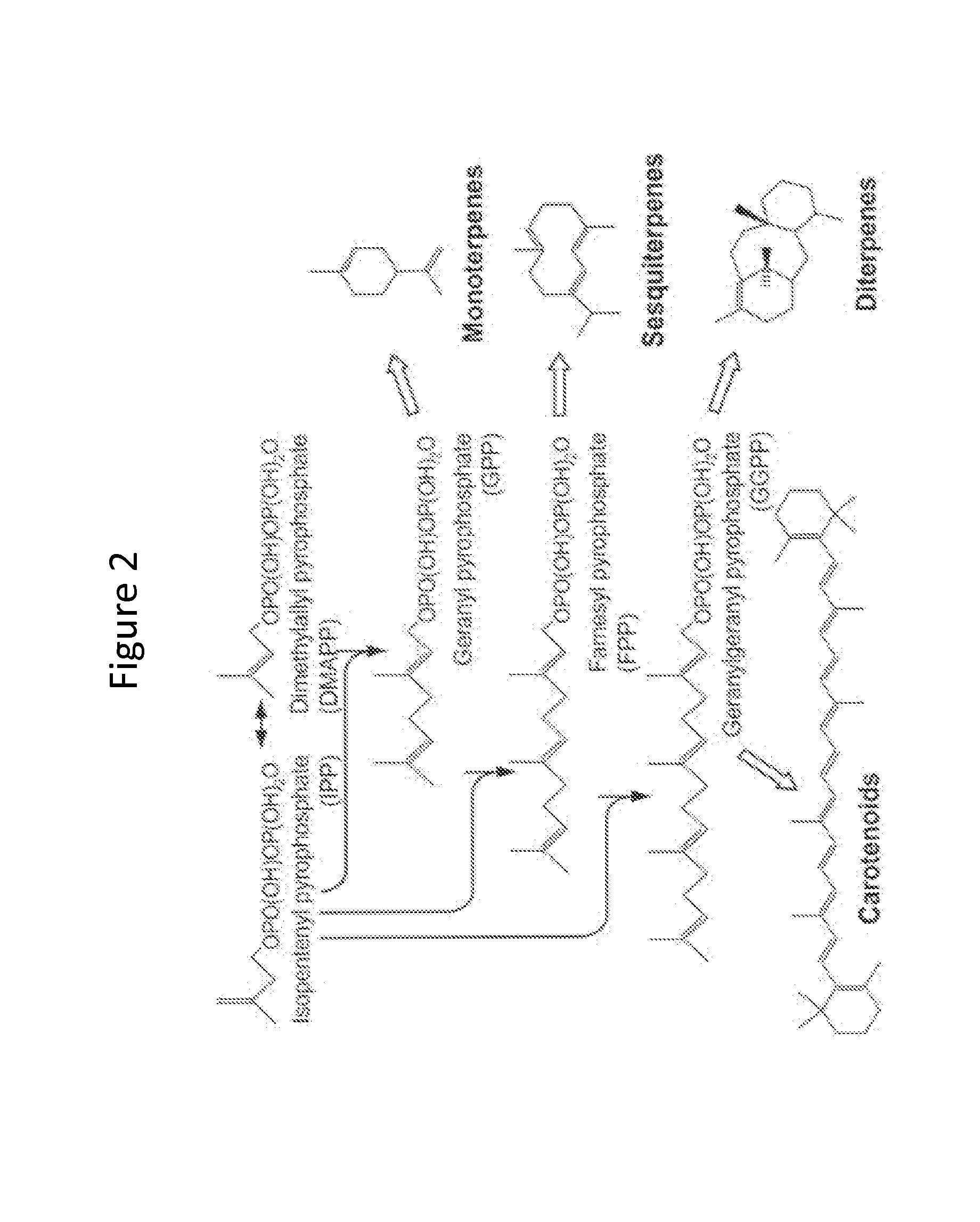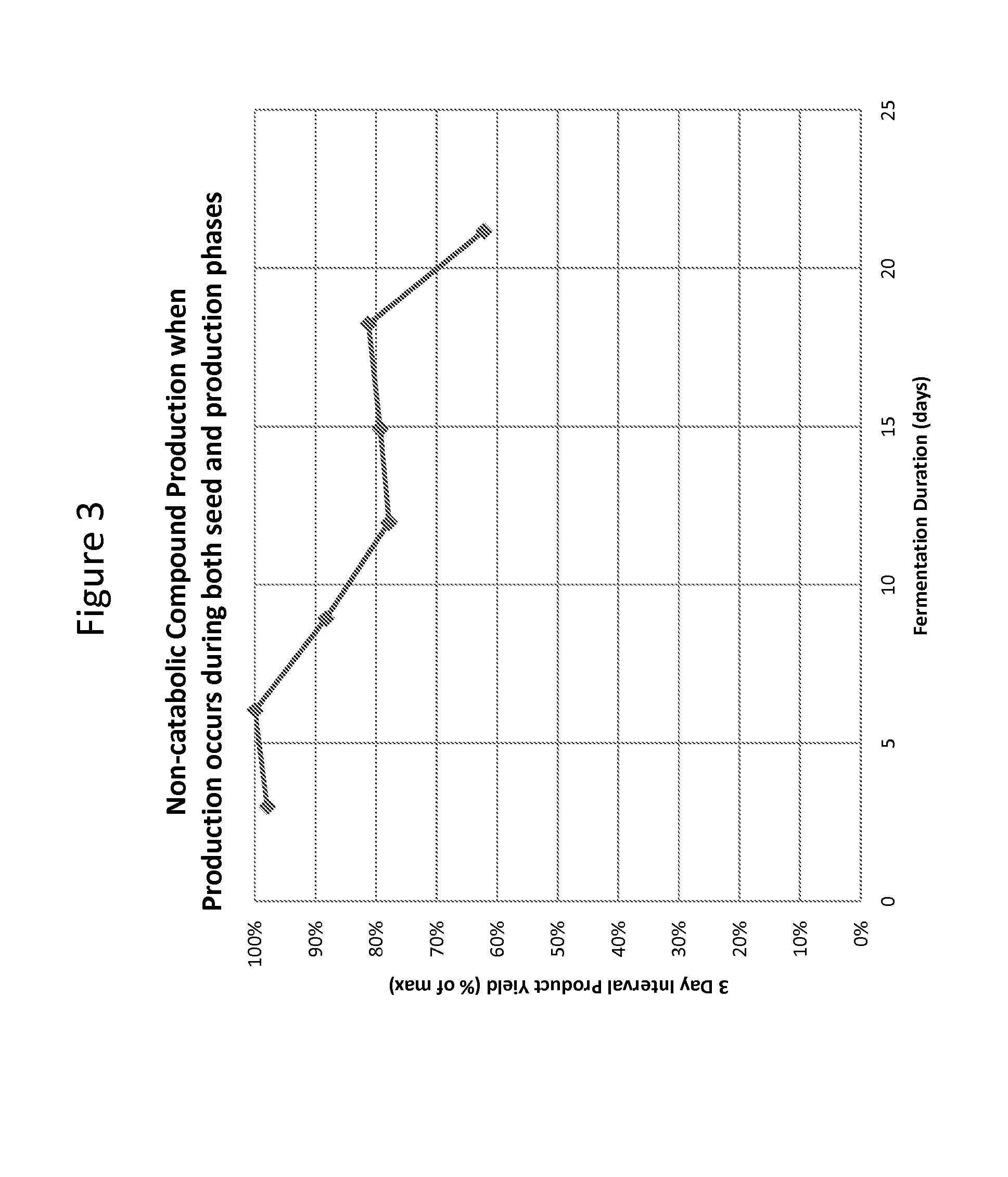Methods for stabilizing production of acetyl-coenzyme a derived compounds
- Summary
- Abstract
- Description
- Claims
- Application Information
AI Technical Summary
Benefits of technology
Problems solved by technology
Method used
Image
Examples
example 1
6.1 Example 1
[0252]This example describes an exemplary method for determining the cell density (OD600) of a yeast cell culture.
[0253]An 8 μL sample of a cell culture was combined with 92 μL of Triton OD Diluent (20 g / L Triton X-114, 200 mL / L PEG 200, 200 mL / L 100% ethanol, rest water) in a clear 96-well plate, the solution was agitated at 1,000 RPM for 6 minutes, and the OD600 was determined by measuring absorbance at 600 nm on an M5 spectrophotometer (Molecular Devices, Sunnyvale, Calif.).
example 2
6.2 Example 2
[0254]This example describes an exemplary Nile Red based method useful for determining the farnesene titer of yeast cell cultures.
[0255]A 98 μL sample of a cell culture was transferred into a 96-well black polystyrene flat bottom assay plate, and 2 μL of Nile Red (Invitrogen, Carlsbad, Calif.) dissolved at 100 μg / mL in DMSO was added to each well. Fluorescence levels were immediately measured on an M5 spectrophotometer with excitation at 500 nm and emission at 550 nm.
example 3
6.3 Example 3
[0256]This example describes an exemplary gas chromaogrpahy (GC) based method useful for determining the farnesene titer of yeast cell cultures.
[0257]Sample was extracted with methanol-heptane (1:1 v / v), and the mixture was centrifuged to remove cellular material. An aliquot of the methanol-heptane extract was diluted into n-heptane with 0.001% t-caryohyllene (which served as a retention time marker to monitor successful injection and elution during the specified GC oven profile) and then injected onto a methyl silicone stationary phase using a pulsed split injection. Farnesene was separated by boiling point using GC with flame ionization detection (FID).
PUM
| Property | Measurement | Unit |
|---|---|---|
| Fraction | aaaaa | aaaaa |
| Fraction | aaaaa | aaaaa |
| Fraction | aaaaa | aaaaa |
Abstract
Description
Claims
Application Information
 Login to View More
Login to View More - R&D
- Intellectual Property
- Life Sciences
- Materials
- Tech Scout
- Unparalleled Data Quality
- Higher Quality Content
- 60% Fewer Hallucinations
Browse by: Latest US Patents, China's latest patents, Technical Efficacy Thesaurus, Application Domain, Technology Topic, Popular Technical Reports.
© 2025 PatSnap. All rights reserved.Legal|Privacy policy|Modern Slavery Act Transparency Statement|Sitemap|About US| Contact US: help@patsnap.com



